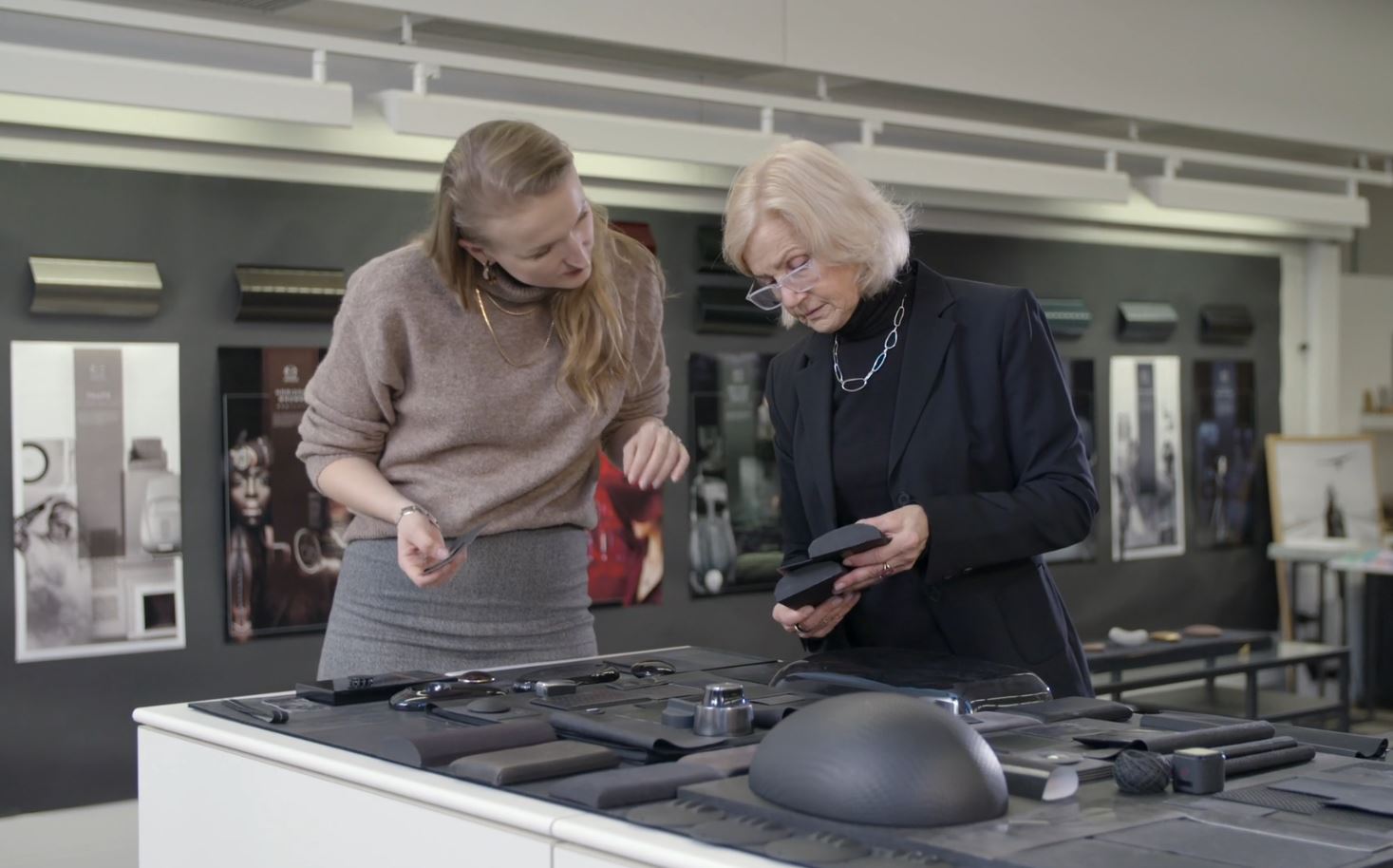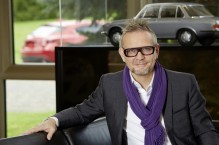Maria Greger has seen many things change since joining Mazda back in 1995. Prior to retiring in 2021, the Head of Colours & Material at Mazda’s European design centre looks back on more than a quarter-century designing automobile cabins and shares her thoughts about colour trends, future mobility and Mazda’s respect for the human touch.
How does one make an inviting space out of a car interior?
With quality and skill. As a Japanese company, Mazda reveres the emphasis traditionally placed in Japan on workmanship. It’s about meticulous attention to detail. These days, we need to get used to the fact that surface areas in the cabin are disappearing. Where there once was a dashboard and centre stack with switches and knobs, we now have large displays fitted flush with their surroundings. There are no corners, no edges and no ornamentation. The point, of course, is to improve usability, but it makes our job as colour and material designers more difficult. As a designer, I’m pleased if we manage to preserve knobs or switches and convey a sense of appeal, whether optic or haptic. These are to me like little gems, and we create them with extra special care. Maybe the driver won’t notice straight away, but such details contribute to the sense of quality in the cabin and a pleasant atmosphere.
What is Mazda’s vision?
Mazda has since 2010 been committed to the Kodo design philosophy. Kodo, which means “soul of motion” in Japanese, represents the power and beauty of movement.
How is this put into practise?
Mazda knows that machines cannot replace the skill and artistry of the human hand, and this applies to every part of the vehicle development process. Especially when it comes to modelling. Clay models are formed by hand. The Takumi craftsmen – those at the pinnacle of their trade – can sand metal razor-thin, and the engineers put people at the focus of all their considerations. Then you have the Kodo, which on the Mazda3, for example, awakens impressions of motion through the interplay of light and shade along its body surfaces.
How has interior design changed during your time at Mazda?
Materials and craftsmanship have become even more important than they already were, and the efforts Colour & Material designers put into selecting cabin materials have increased accordingly. The features and details, and indeed the quality of the interior as a whole, have changed a lot over the years. Just look at the leather, the wood and the metallic finishes we have.


Tell us more about the design process at Mazda Research Europe.
We’re focused on the European market at MRE in Frankfurt, researching and selecting the trends that matter for Mazda. We then use these as the basis for our designs. Take a future model like the next Mazda6. We imagine how a car that does not yet exist could look, proposing materials and colours and complete interiors, and our design colleagues in the U.S. and Japan are doing the same. The results are presented to the headquarter, which is ultimately responsible for the final product. They’ve been doing a great job, by the way. But I also want to mention that some concepts originating in Frankfurt, like the Mazda CX-30, were adopted as-is.
Did you always want to design car interiors?
I was considering become an interior designer when I was in the tenth grade, but decided instead when I finished school to study textile design. I made use of my network: A fellow student worked for a company in Trier [Germany] that produced fabric for the automotive industry. I applied and was hired. At first I had no idea how much the job would actually have to do with textile design. But when I moved over to Mazda, it was to be honest more exciting, since we’re designing interiors in a relatively small space with many different surfaces and colours. Cabin textiles are some of the most strenuously tested fabrics in the world, but also some of the least expensive – in contrast to furniture materials. That makes it an ongoing challenge to come up with truly excellent designs.
How do you overcome such challenges?
The three of us from the Colour & Material team in Frankfurt keep ourselves informed continuously. We go to fashion, furniture and design events, sound out the market and identify trends.


Like the trends predicted by Li Edelkoort[1]?
Have you seen her live? She is very charismatic, has great intuition and manages to captivate her audience. She is a luminary when it comes to catching and revealing trends. We attend her talks regularly.
Let’s talk about colour. We seem to be stuck with the same exterior colours. What do you expect tomorrow will bring?
I think white is a good example. White was en vogue the past few years, and it’s still here. The fact is, resale value remains an important factor in people’s colour choices, so many buyers will tend in the direction of silver, black or white. Mazda went its own way with red, creating iconic reds for the Kodo designs. I’m proud to say we were a trendsetter here, starting a red revival, and not only for sports cars. As for the future, there is a general movement towards warmer colours, so we might get more of these. I’m also expecting more green cars, since green is coming back in the fashion industry, but you never know. In any case, we’re still going to see a lot of silver tones.
What are the biggest challenges for your unit?
We need to come to terms with new technology and new forms of mobility. Cars are also getting plainer and have more displays. Therefore, the question for us designers is: Can I create a nice atmosphere in spite of it all? And it needs to be more than just pleasant, it also has to be intuitive. In addition, we’re also trying to use materials and shapes to enhance driver concentration. So it’s actually quite thrilling to work on interiors.


What is the fundamental issue about mobility?
It’s complex. There is a lot of short-term thinking in the automobile industry. Electric vehicles are arriving on the market, and I think hydrogen cars are not all that far behind. But I believe we need to put mobility at the focal point, and then in the next step determine what kind of vehicle you should build to fulfil the given mobility requirements – not the other way around. We have to look at things like how many young people will even want to drive in the future. Urban planners and mobility planners need to cooperate more closely, working hand-in-hand. In any case, it’s a fascinating topic that is certainly going to be with us for quite some time.
Is there a car you dream of designing?
Not really. I’m very pleased with the CX-30. The little SUV turned out perfectly; it’s perhaps the nicest vehicle I’ve ever worked on, especially with the Soul Red Crystal exterior. It’s not too big, has comfortable seating, and very high-quality materials and finishing. The size suits me very well, since I’m usually on my own. The MX-5 is another car that gets me excited. Although really more of a second vehicle, to me it’s still a little dream car and so much fun to drive.

What aspect of your long career stands out most?
Being part of an international team together with so many different cultures. We have people from all over Europe and beyond, and it’s been fascinating working with Japanese and Asians as well as Americans and other nationalities and learning about their cultures. This has been a great experience for me.

What advice would you give your younger self?
Enjoy whatever you do. And motivate and inspire others to do the same. Looking back at my career, I have to admit that I have been very satisfied with my role. Colours and materials are my world!
[1] Dutch fashion and design trend forecaster




